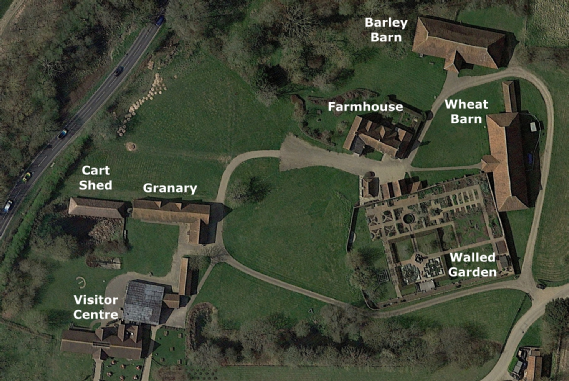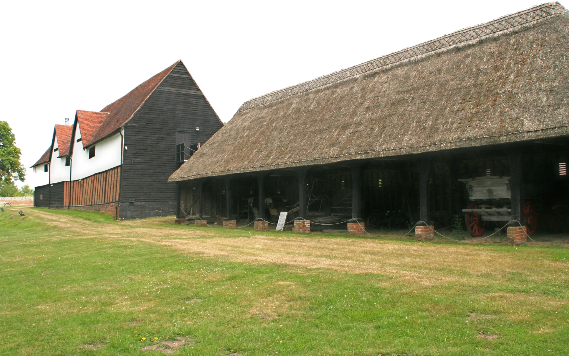"The manor of Cressing was granted to the Knights Templar in 1136. It was therefore one of the very earliest Templar estates in England. The original 1400-acre site was a considerable agricultural enterprise, and was led by a Templar Preceptor, accompanied by two or three knights or sergeants, together with a chaplain, a bailiff, numerous household servants overseeing around 160 tenant farmers. The manor had a mansion house, bakehouse, brewery, dairy, granary, smithy, gardens, a dovecote, a watermill, and a windmill,and two great barns. The proceeds from the Cressing Temple were all diverted to fund Templar activities in the Crusader states in the Middle East.
The Hospitaller manor was dissolved in 1540, soon after the last monasteries, and on 8 July 1541, King Henry VIII granted the manor and lordship of Cressing and the half-hundred of Witham to Sir William Huse and John Smyth, one of the barons of the Exchequer. John Smyth's family held the manor until 1657. Following the Reformation, in the late sixteenth century there was a mansion on the site, now called the 'Great House', but it was demolished in the eighteenth century.
Now only the farmhouse, granary, wagon lodge and stable yards remain. The mid-sixteenth century Tudor brick garden also stands and has been developed by Essex County Council who acquired the barns for the people of Essex in 1987. The farmhouse dates from 1618, and the coach house from 1800." (Wikipedia)


